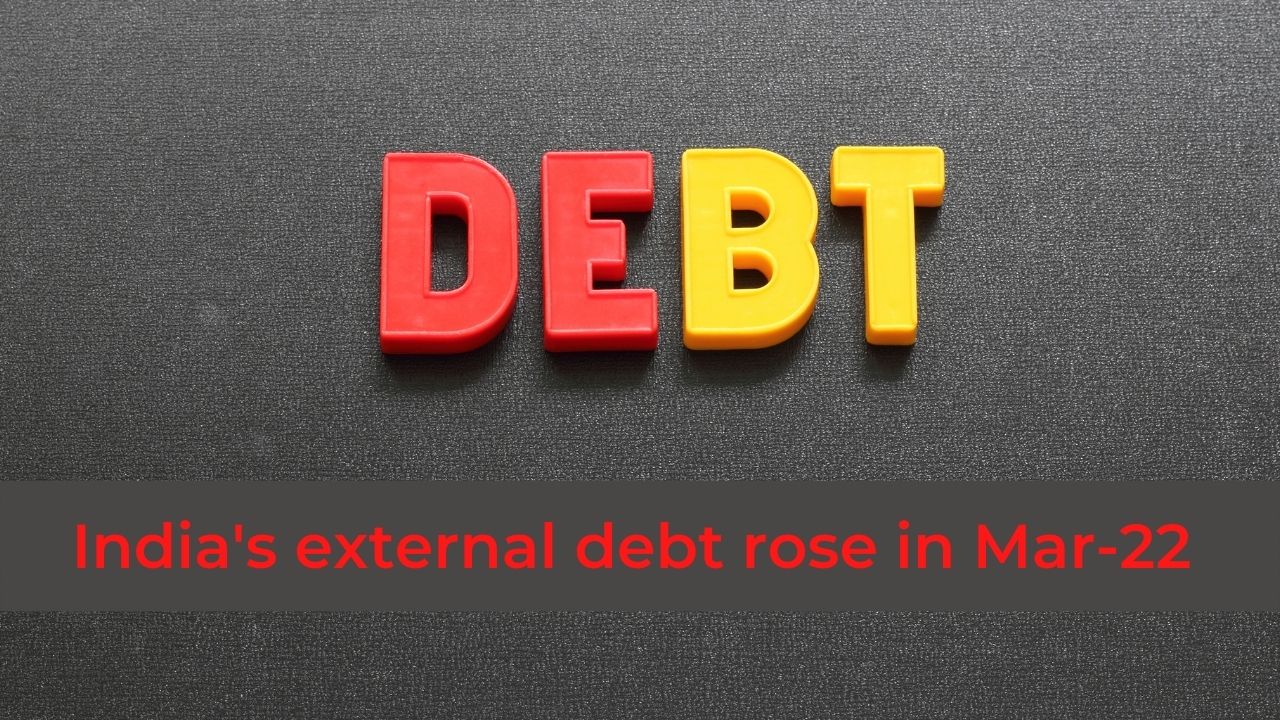India’s external debt surges sharply in March 2022 quarter

One of the barometers of an economy is the level of external debt. For the fiscal year ended March 2022, the external debt of the Indian economy was up by 8.2% to $620.7 billion. This is in comparison to the external debt levels as on March 2021. If the rise in the external debt is a matter of concern, the external debt as a share of GDP actually tapered lower due to the sharp spike in the GDP during the current year. For instance, between March 2021 and March 2022, the external debt to GDP ratio actually fell from 21.2% to 19.9%.
The net debt actually has two parts. The gross borrowings and the adjustments for the currency factor. When you borrow in dollars, the Indian economy gains from the strengthening of the dollar. That is called the valuation effect. For the fiscal year FY22, the external debt actually saw a net accretion of $58.8 billion. However, there was a valuation gain of $11.1 billion on account of strength in dollar versus the rupee and other hard currencies. The net impact was around $47.1 billion or about 8% accretion in external debt.
A large portion of this external debt is long term in nature. As of March 2022, out of the $620.7 billion of external debt, long-term debt (with original maturity of above one year) was around $ 499.1 billion, representing about 80% of the total external debt. However, this does not include the figure of long term debt with a residual maturity of less than 1 year. If that is also added up, then the total share of short term debt in the overall external debt is fairly comfortable at around 43%.
Start Investing in 5 mins*
Get Benefits worth 2100* | Rs.20 Flat Per Order | 0% Brokerage
If you take a broader definition of short term debt to also include long term debt with a residual maturity of 1 year, then the share of such short term debt Is 43.1%. Even as a shar of the forex reserves of the Indian economy, this figure is fairly accurate. If you look at the currency mix of the external debt, then dollar debt still dominates at 53.2% of the total external debt. This is followed in the order being Indian rupee debt (31.2%), SDR (6.6%), yen (5.4%) and the euro (2.9%).
During the period ended March 2022, there was an increase in government and non-government debt.. The share of outstanding debt of non-financial corporations in total external debt was the highest at 40.3%. This was followed by deposit-taking corporations at 25.6%, general government (21.1%) and other financial corporations (8.6%). In terms of products, the dominant category of external debt was in the form of loans at 33% followed by contributions from currency and deposits (22.7%), trade credit and advances (19%) and debt securities (17.1%).
The good news for India is that despite the spike in external debt, the cost of servicing actually went down. For instance, as of March 2021, the debt service ratio (Principal plus interest) fell to 5.2% of current receipts. That has sharply come down to 5.2% of the current receipts as of Marcy 2022. The reasons are two-fold but the moral of the story is that India has actually brought down the debt servicing costs, despite a spike in external debt.
- Flat ₹20 Brokerage
- Next-gen Trading
- Advance Charting
- Actionable Ideas
Trending on 5paisa
Disclaimer: Investment in securities market are subject to market risks, read all the related documents carefully before investing. For detailed disclaimer please Click here.

 5paisa Research Team
5paisa Research Team